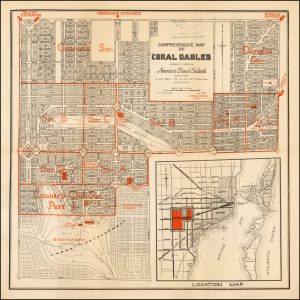Change—whether evolutionary or man-made—is a vital process that is woven into the fabric of nature, one that has shaped the world to how we see it today. On a small scale, change has the potential to better one’s life, like a New Year’s Resolution to maintain a healthier diet. On a larger scale, it has the power to affect the balance of the natural world around us, many times for the negative. With a global pandemic still threatening facets of our everyday lives, from working to seeing family and friends, the past two years have presented a unique series of challenges for us to overcome—because of this, change is more important now than it has ever been previously.
For me, the pandemic presented a life-changing set of circumstances. Following my graduation from the University of Florida in December of 2018 (Go Gators!), I maintained positions working in the Plant Diagnostic Clinic and the UF Harn Museum of Art on-campus, as I contemplated (and saved money for) the option of pursuing a graduate degree in 2020. Needless to say, COVID-19 had other plans. When the University had to close its doors, I struggled to find a way to pay the bills, so I decided to put myself out there and test the job market. To my surprise, I was blessed with the opportunity to work for one of the organizations I looked up to during my time at University – the University of Florida Institute of Food and Agriculture Sciences (UF/IFAS) in Miami-Dade County.
Most people would say that packing up and moving to Miami in the midst of a global pandemic sounds like a terrible idea. Ultimately, my decision to move in 2020 stemmed from the opportunity to find a career in my field. Admittedly I had only visited Miami a few times prior to calling it home, but its rich culture and history enticed me to take the chance. So far, it is proving to be the greatest change I have ever made in my life. My job at the Miami-Dade County Extension Office has afforded me the chance to experience and explore the many corners of South Florida as I get acquainted with its people and unique sub-tropical flora and fauna. In my time off, I make it a point to get out and see everything my new home has to offer—I especially enjoy the rich history surrounding the specific area I now call home, Coral Gables “the city beautiful”—a name it definitely lives up to!

Recently, I took a trip to the Coral Gables Museum for one of their “Twilight Fridays” events that allows patrons to experience the exhibits after-hours for free. Aside from the astounding artwork of Julio Larraz that was on-display at the time, I was particularly intrigued with the historical section featuring George E. Merrick and his vision for Coral Gables. Being one of the first major planned communities, I found the early layouts and maps astounding—not only for the amount of effort it must have taken, but also due to how few people initially settled here. Even more interesting were the photographs of landmarks I pass every day on the way to work surrounded in pine thicket (especially considering that Coral Gables today is essentially devoid of South Florida slash pine communities). One of the classes I teach touches on Biodiversity and Conservation, tying in specifically with conservation of our South Florida pine rocklands—so as I pondered over these photos in the museum, they really resonated with me on this topic of change.

I found the transition that has occurred here in Miami in just the past 100 years alone to be staggering. Surely my big move to South Florida fails to compare to the abrupt changes the local plant and wildlife have had to endure with problems such as habitat fragmentation and displacement due to human development. Whether we intend to or not, we are upsetting the balance of nature—a fact that holds true in the data surrounding the current “Insect Apocalypse” (as it has been deemed by The New York Times), which is an ongoing mass extinction of pollinators afflicting the world today. According to the Food and Agriculture Organization of the United States, present species extinction rates are 100 to 1,000 times higher than normal with invertebrate pollinator species making up ~40% of projected biodiversity loss in the future. Considering that more than half of the world’s diet of fats and oils come from animal-pollinated plants, more stock needs to be taken in this crisis that is currently threatening our natural world. The time for the next big change has come!
In order to ensure a healthy, habitable planet Earth for future generations we have to step-up and enact the changes that we want to see. As residents of Florida, we should all hold a personal responsibility to maintain our balance with the natural world, assessing as little impact on the environment as possible. I encourage everyone to research and participate in the practices of the Florida-Friendly Landscaping™ Program and learning to adapt your home landscape more to nature—not to make nature adapt to your landscape. Who knows, maybe your neighbor will follow suit (that’s the goal)! This includes contacting your local extension office when deficiencies or pests appear in your yard. This allows you to know what you are fighting against before you blindly go applying pesticides, herbicides and fertilizers (these are free services)! Water is Florida’s most important resource, and it is our duty to protect it. Many of these products I have just mentioned end up in our major bodies of water when applied incorrectly causing a host of environmental issues.
In coming blogs, I will break down each of the nine Florida-Friendly Landscaping™ Principles to assist you in making small changes to your cultural landscaping practices that will drastically improve your impact on the environment. Conservation works, but it takes an army! Are you ready to join the fight at your own home?
 0
0
